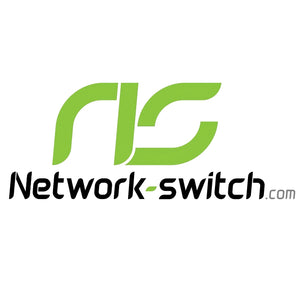Patch cables and crossover cables are both twisted-pair Ethernet leads with RJ-45 (8P8C) connectors—but they’re wired differently and therefore used in different situations. This guide gives you clean wiring tables, quick “when to use” rules, modern notes on Auto-MDI/MDI-X, and deployment checklists so you can stop guessing and plug in with confidence.
TL;DR — Pick This, Not That
| Choose… | When | Why |
| Patch (Straight-through) | Connecting different device types (PC ↔ switch, router ↔ switch, AP ↔ switch, modem ↔ router) | Both ends use the same wiring scheme (T-568A or T-568B); simplest, works everywhere—especially with Auto-MDI/MDI-X. |
| Crossover | Connecting same device types without Auto-MDI/MDI-X (PC ↔ PC, switch ↔ switch, router ↔ router) | Ends use different schemes (one A, one B) so TX and RX are swapped electrically. Mostly legacy/edge cases today. |
Most Gigabit and Multi-Gig ports on modern switches/NICs (e.g., Cisco Catalyst/Cloud-Managed, Huawei CloudEngine-S/-Sx, Ruijie RG series) support Auto-MDI/MDI-X, so a patch cable usually works even between same-type devices. Keep one crossover cable for troubleshooting legacy gear.
T-568A vs T-568B (RJ-45 Pinouts)
Both standards terminate the same four twisted pairs—they just order the pairs differently. Use either standard consistently across your plant.

Pin/Color Map
| Pin | Pair | T-568A Color | T-568B Color |
| 1 | Pair 3 | White/Green | White/Orange |
| 2 | Pair 3 | Green | Orange |
| 3 | Pair 2 | White/Orange | White/Green |
| 4 | Pair 1 | Blue | Blue |
| 5 | Pair 1 | White/Blue | White/Blue |
| 6 | Pair 2 | Orange | Green |
| 7 | Pair 4 | White/Brown | White/Brown |
| 8 | Pair 4 | Brown | Brown |
Patch (straight-through): both ends A-A or B-B
Crossover (Fast-Ethernet style): one end A, the other B (pairs 2↔3 cross)
Gigabit note: 1000BASE-T uses all four pairs simultaneously. Auto-MDI/MDI-X handles pair role automatically; special “gigabit crossover” cables (crossing all pairs) are rarely required.
How They’re Wired?
Patch (Straight-through)
- End 1: T-568A or T-568B
- End 2: same as End 1
- Effect: TX pins on one device land on RX pins of the other via internal MDI/MDI-X logic or Auto-MDI/MDI-X.
Crossover
- End 1: T-568A
- End 2: T-568B
- Effect: The transmit pair (pins 1-2) crosses with the receive pair (pins 3-6). Used when ports don’t auto-correct.

Use-Case Matrix
| Link | Devices | Cable (Legacy) | Cable (Modern with Auto-MDI/MDI-X) |
| PC ↔ Switch | Different types | Patch | Patch |
| PC ↔ PC | Same type | Crossover | Patch (usually fine) |
| Switch ↔ Switch | Same type | Crossover | Patch (usually fine) |
| Router ↔ Switch | Different types | Patch | Patch |
| Router ↔ Router | Same type | Crossover | Patch (usually fine) |
| Hub ↔ Hub (legacy) | Same type | Crossover | Patch may work if hub supports Auto-MDI/MDI-X (rare) |
Scenario Walk-Throughs
Scenario 1: PC ↔ PC
- Problem: Both NICs transmit on the same pins; without Auto-MDI/MDI-X they “speak over each other.”
- Fix: Use crossover (or rely on Auto-MDI/MDI-X and use patch).
Scenario 2: PC ↔ Switch ↔ PC
- Switches internally swap where needed; no cable crossing required.
- Use: Patch from each PC to the switch.
Scenario 3: PC ↔ Switch ↔ Switch ↔ PC
- In pure legacy land you’d need a crossover between the switches; with modern gear, patch works end-to-end thanks to Auto-MDI/MDI-X.
Cabling Categories & Performance
| Speed | Recommended Cable | Max Channel Length (typical) | Notes |
| 10/100 Mb/s | Cat5e or better | 100 m | Patch or crossover rules apply as above. |
| 1 Gb/s | Cat5e/Cat6 | 100 m | Auto-MDI/MDI-X is common on Gigabit. |
| 2.5/5 Gb/s (N-Base-T) | Cat5e (short), Cat6 preferred | 100 m | Check NIC/switch specs for reach on Cat5e. |
| 10 Gb/s | Cat6A (preferred), Cat6 (55 m typical) | 100 m (Cat6A) | Use quality patch cords; keep bends gentle. |

PoE Considerations
- Standards-based PoE/PoE+/PoE++ (802.3af/at/bt) works over straight-through or crossover as long as the pairs are intact; the PSE/PD negotiate power.
- Passive PoE (non-standard injectors) may rely on fixed pair mapping—use straight-through as instructed by the vendor.
FAQs
Q1: Do I still need crossover cables in 2025?
A: Rarely. Keep one in your toolkit for legacy devices or when Auto-MDI/MDI-X is disabled.
Q2: Which is better, T-568A or T-568B?
A: Neither—consistency matters. Many regions default to B; government/international sites may specify A.
Q3: Can I mix A and B in the same building?
A: Avoid it. Pick one for all permanent links. Mixing is how accidental crossovers happen.
Q4: Will a crossover damage my equipment?
A: No—worst case the link won’t come up. Swap to a straight-through or enable Auto-MDI/MDI-X.
Conclusion
Patch and crossover cables look the same but are wired for different roles. In modern networks, a straight-through patch is the default for almost everything thanks to Auto-MDI/MDI-X. Use a crossover when you must directly connect two like devices that don’t auto-correct. Standardize on one termination scheme (T-568A or T-568B), label clearly, and your copper links will “just work.”
Did this article help you or not? Tell us on Facebook and LinkedIn . We’d love to hear from you!





 https://network-switch.com/pages/about-us
https://network-switch.com/pages/about-us





